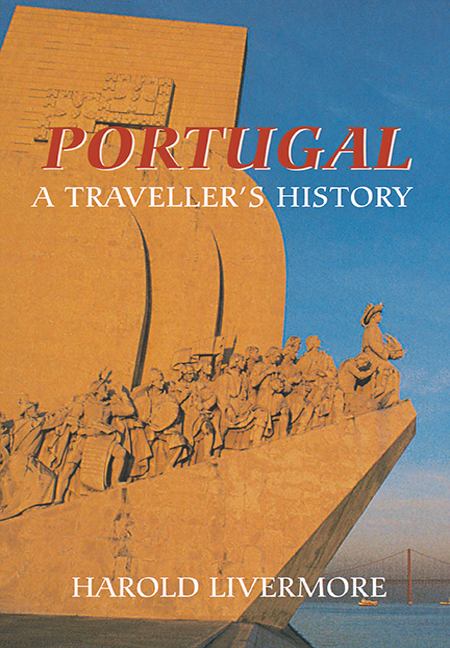Book contents
- Frontmatter
- Contents
- List of Illustrations
- Foreword
- 1 Introduction
- 2 Portugal in History
- 3 Before Portugal
- 4 Islamic Portugal
- 5 Architecture
- 6 Painting
- 7 Music
- 8 Birds
- 9 Fishing
- 10 Portuguese Wines
- 11 Lisbon
- 12 North from Lisbon
- 13 Oporto
- 14 North of Oporto
- 15 Interior Portugal
- 16 Alentejo
- 17 Algarve
- Afterword
- Index
2 - Portugal in History
Published online by Cambridge University Press: 11 May 2017
- Frontmatter
- Contents
- List of Illustrations
- Foreword
- 1 Introduction
- 2 Portugal in History
- 3 Before Portugal
- 4 Islamic Portugal
- 5 Architecture
- 6 Painting
- 7 Music
- 8 Birds
- 9 Fishing
- 10 Portuguese Wines
- 11 Lisbon
- 12 North from Lisbon
- 13 Oporto
- 14 North of Oporto
- 15 Interior Portugal
- 16 Alentejo
- 17 Algarve
- Afterword
- Index
Summary
Portugal was a monarchy for eight centuries, and has been a republic since 1910. As every Portuguese schoolchild knows, its first king was Afonso Henriques, who was born in about 1109 and lived until 1185. He replaced his mother Queen Teresa in 1128, seized Santarém from the Muslims and took Lisbon after a long siege in 1147, thus carrying the frontier from the Mondego to the Tagus and beyond. He used the title of king from 1139 or 1140. Our pupil may or may not have been told that King Afonso I defeated five Muslim kings in the battle of Ourique and that his victory was assured by the aid of St James, or Santiago, mounted on a white charger. The great historian Alexandre Herculano (1811–77) found no contemporary evidence for the apostolic intervention, but concluded that the Portuguese state owed its existence to the strong arms of Afonso Henriques and the barons of the Douro valley who had brought him up. The conquest of Lisbon was achieved with the aid of several thousand crusaders who put in at Oporto on their way to Palestine. Many were Anglo-Normans from southern and eastern England. Expansion, first in the Iberian Peninsula and then in the overseas Discoveries, is a main theme of Portuguese history, in which the Ancient Alliance played its part. All Portuguese know this and are often surprised that many English visitors do not.
The notion of a Portugal suddenly springing into existence at the behest of Afonso Henriques is almost as extravagant as the visitation of St James. Our intelligent child knows that there was a county of Portugal long before it became a kingdom, that it was governed from the castle of Guimarães, where Afonso was born, and that his parents were Count Henry, a Burgundian, and Dona Teresa, on whom the county was bestowed by her father, Alfonso VI of Leon. Tarásia, as she was always called, was styled queen as the daughter of an emperor, but, as was customary, took her husband's rank. After he was killed in 1112, she governed as queen for sixteen years, and was so recognised by more than one pope.
The territory of Portugal had been founded, or at least claimed, in 868 by one Vimara Peres, a count of southern Galicia.
- Type
- Chapter
- Information
- Portugal: A Traveller's History , pp. 9 - 36Publisher: Boydell & BrewerPrint publication year: 2004

